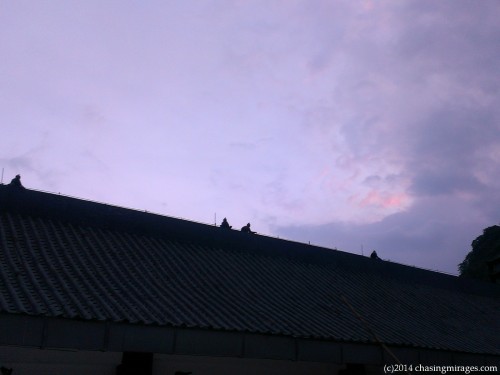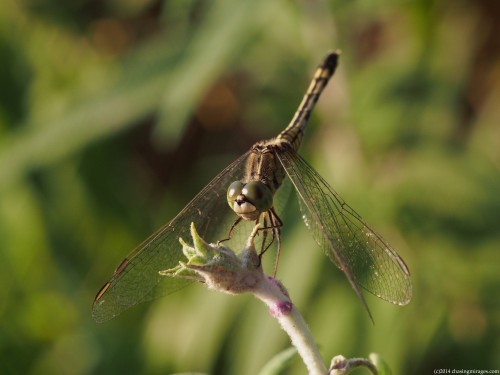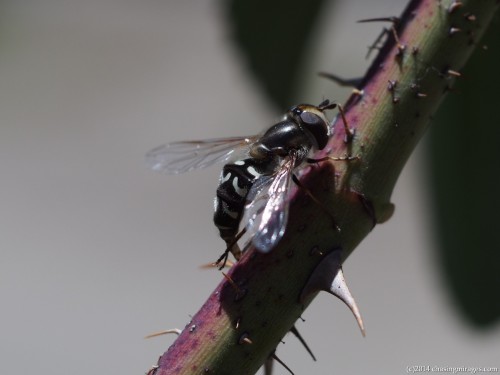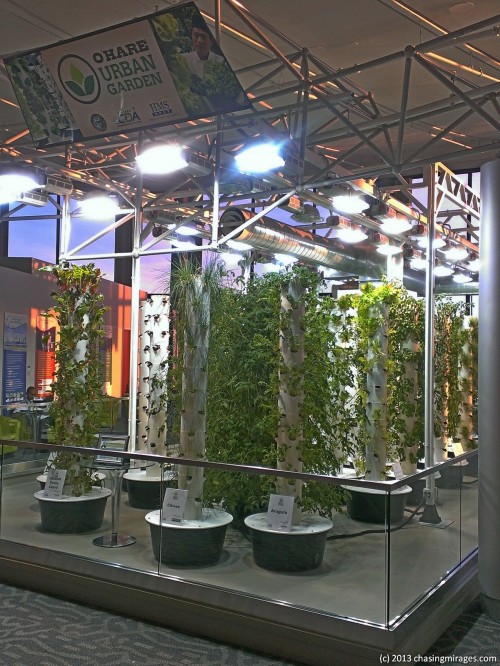Back in Chongzuo for my first pilot study. Â The day after I arrived, Typhoon Rammasun, the strongest typhoon to strike southern China in over four decades, was hot on my heels, but because Chongzuo is inland, we avoided the worst. Â All I can complain about is losing three days of field time to the rain.
Back in Sipsongpanna
Back in 2012, I ended a southeast Asia trip by crossing overland from Laos into Sipsongpanna. Â As you might remember, this southernmost area of Yunnan left some deep impressions in my mind, and it’s a joy to be here again.
I’m now here taking a month-long field course in the Sipsongpanna Tropical Botanical Garden, one of the largest botanical gardens in China and an active research institute of the Chinese Academy of Sciences. Â It’s a precious opportunity to become more familiar with one of my favorite places in this country.
This wouldn’t be chasingmirages without an environmental tragedy. Â Here, the most visible destruction is the wholesale conversion of native tropical forest into rubber tree plantations. Â More to come on this important issue. Â For now, please try to identify the species of dragonfly in my latest macro shot (taken in the Sipsongpanna Tropical Botanical Garden) by leaving a comment below. Â Another lame reward for the first person to correctly identify it!
Note: click on the image for the full-size file. Â Check out those compound eyes!
The Wonderful World of Macro Photography
A friend of mine recently convinced me to buy a legacy fully manual macro lens over the critically acclaimed newfangled Olympus 60mm f/2.8 macro lens. Â The cost of the legacy lens was less than a quarter of the price of a new Olympus, and I’ve been having a lot of fun with it. Â Above is one of my favorite shots so far.
A reward for the first person to correctly identify the species by leaving a reply below. Â Hint: the photo was taken in Berkeley, California.
Wall to Nowhere
Oh God. It’s been the longest hiatus ever.
I’m back in China for the summer, no more excuses.  Last week I visited the crumbling Great Wall near the village of Long Quan Yu (é¾æ³‰å³ªï¼‰.  There’s an awesome B&B with cabins built on the mountainside from which we enjoyed panoramic views and stargazing through floor-to-ceiling windows.
The best part of it was, the running water came from mountain springs. Â It’s the first time I’ve drunk straight from the faucet in China. Â The only notable consequence was five full days of simultaneous projectile vomiting and incendiary diarrhea. Â On the bright side, I lost five kilos and regained a six-pack.
Just kidding, the water was really damn good.
Greenwashing O’Hare
I was in O’Hare airport for a layover a couple of days ago and a sign for “O’Hare Urban Garden” caught my eye. On a mezzanine, sandwiched between a USO Lounge and a Yoga Room, was the “Urban Garden” – a blatant greenwashing failure.
Not only was this garden located in a non-urban setting, it could hardly be called a “garden.” Its vegetables were completely dependent on high consumption artificial lights as well as barrels (blue, visible in the background of the picture below) of agricultural chemicals pumped through plastic planter columns.
The designers of this monstrosity, out of ignorance or a twisted sense of irony, chose to eviscerate the most important benefits of urban gardening. Efficient use of resources? The exact opposite. Minimizing chemical inputs? No. Increasing healthy food access, leisure activity and social interaction for inner city communities? Not even remotely possible.





